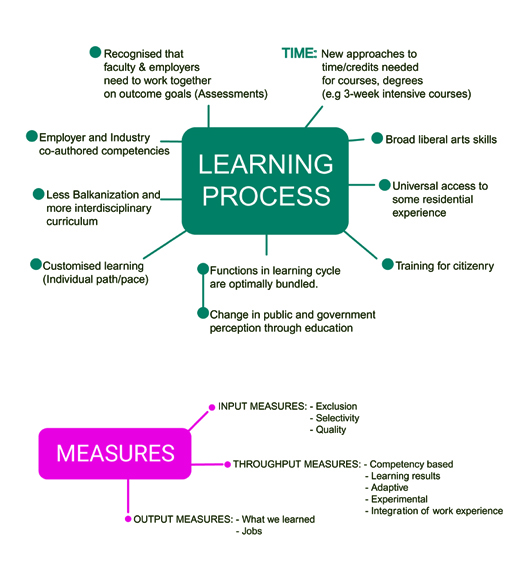1.3 Competency-based curriculum
Figure 2 portrays some of the key aspects of a competency-based curriculum. The focus is upon the learning process and should include input measures that encompass quality control; have involvement from employers; have access to real world or residential experience where possible; develop skills to be an active citizen; and include teaching and assessment that demonstrates skills across multiple areas, e.g. how science works in the real world. Finally, the output involves assessment that demonstrates competence in preparation for future education or employment.
A competency-based curriculum focuses less on what learners need to know and more on how learners apply their knowledge, skills and attitudes to the real-world environment. As a result, a competency-based curriculum helps learners to develop specific and generic competencies required to either progress in their education or progress into employment. In a competency-based curriculum learners are required to incorporate the elements of a constructively aligned curriculum, outlined in Section 1.1, and in addition:
- build upon demonstrated mastery of subject knowledge
- demonstrate their ability to transfer learning between different environments (this can include tasks where learners are asked to demonstrate their knowledge but do not receive a final or formal grade and is known as ‘formative assessment’ or assessment for learning)
- complete assessments that are meaningful and relevant to the skills required in the workplace
- develop and apply skills and dispositions needed for successful employment.

